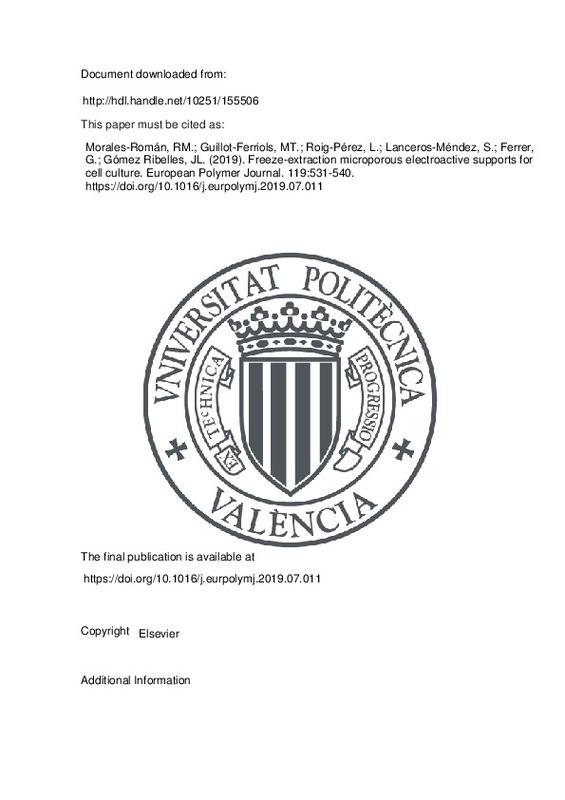JavaScript is disabled for your browser. Some features of this site may not work without it.
Buscar en RiuNet
Listar
Mi cuenta
Estadísticas
Ayuda RiuNet
Admin. UPV
Freeze-extraction microporous electroactive supports for cell culture
Mostrar el registro completo del ítem
Morales-Román, RM.; Guillot-Ferriols, MT.; Roig-Pérez, L.; Lanceros-Méndez, S.; Gallego-Ferrer, G.; Gómez Ribelles, JL. (2019). Freeze-extraction microporous electroactive supports for cell culture. European Polymer Journal. 119:531-540. https://doi.org/10.1016/j.eurpolymj.2019.07.011
Por favor, use este identificador para citar o enlazar este ítem: http://hdl.handle.net/10251/155506
Ficheros en el ítem
Metadatos del ítem
| Título: | Freeze-extraction microporous electroactive supports for cell culture | |
| Autor: | Morales-Román, Rosa María Guillot-Ferriols, María Teresa Roig-Pérez, L. Lanceros-Méndez, S. | |
| Entidad UPV: |
|
|
| Fecha difusión: |
|
|
| Resumen: |
[EN] Poly(vinylidene fluoride) (PVDF) is a semicrystalline polymer with four crystalline phases, of which the all trans conformation (beta-phase) is the one with the largest piezoelectric response and best electroactive ...[+]
|
|
| Palabras clave: |
|
|
| Derechos de uso: | Reconocimiento - No comercial - Sin obra derivada (by-nc-nd) | |
| Fuente: |
|
|
| DOI: |
|
|
| Editorial: |
|
|
| Versión del editor: | https://doi.org/10.1016/j.eurpolymj.2019.07.011 | |
| Código del Proyecto: |
|
|
| Agradecimientos: |
This work was supported by the Spanish Government through Projects MAT2016-76039-C4-1-R and MAT2016-76039-C4-3-R (including FEDER funds). Maria Guillot-Ferriols acknowledges the government funding of her doctoral thesis ...[+]
|
|
| Tipo: |
|







![[Cerrado]](/themes/UPV/images/candado.png)


